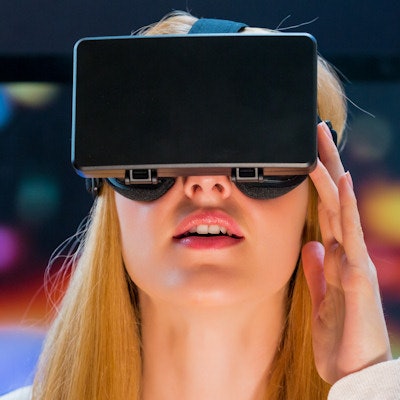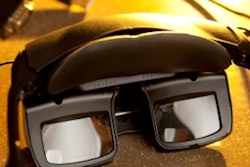
Educating pediatric patients about their upcoming chest x-ray exam with virtual reality (VR) technology helped reduce preprocedural anxiety, and, in turn, the need for repeat exams and parental presence in the imaging suite in a new study, published online September 9 in JAMA Pediatrics.
The group from Seoul National University in South Korea produced a three-minute VR educational video for children who were scheduled for an x-ray exam. The VR video is a fully immersive, interactive experience that introduces the process of undergoing chest radiography to children, encouraging them to cooperate appropriately.
"Through reducing anxiety in children and parents, immersive and vivid VR education before a radiographic procedure was effectively able to increase parental satisfaction and reduce unnecessary exposure to the radiographic environment for parents," wrote senior author Dr. Jung-Hee Ryu, PhD, and colleagues.
Virtual chest x-ray
The unfamiliar setting of a radiology room and large imaging machines may intimidate pediatric patients and lead to stress behaviors -- such as crying or squirming -- that can delay the acquisition of medical imaging exams. Strategies employed to minimize this behavior have included sedation and providing children with a variety of positive distractions, from therapy dogs to superhero gear.
Educating children about a specific imaging exam before they undergo it has also proved effective at lowering their sense of unease, the authors noted. In recent years, advancements in VR have led to the integration of the technology into patient education at various clinics. Ryu and colleagues set out to build upon these prior experiences with VR to help reduce anxiety in children during chest x-ray, one of the most common procedures in pediatric radiology.
Together with a VR production company (JSC Games), the researchers produced a short educational video that explained the patient aspect of chest radiography in terms a young child could understand. The VR video consisted of characters from an animated film discussing the steps involved in undergoing chest x-ray -- including proper positioning and taking a deep breath -- while simulating the procedure.
The researchers tested the utility of their educational video on a cohort of 99 pediatric patients ages 4 to 8 scheduled for chest x-ray exams. Before undergoing the exam, roughly half of the patients watched the group's educational video while wearing a VR headset (Oculus Go, Oculus VR), whereas the other half received standard verbal instructions about how to participate in the exam.
Better patient experience
On average, Ryu and colleagues found that patients who watched the VR video displayed significantly lower levels of anxiety based on the Observational Scale of Behavioral Distress (OSBD) scale. The VR group had a score of 2 out of 30, where a lower score indicated less anxiety, compared with a score of 5 for the control group (p = 0.004).
In addition, a much smaller proportion of patients in the VR group were classified as "more distressed" (i.e., having an OSBD score of 5 or higher) than in the control group.
| Virtual reality vs. verbal instruction for chest x-ray patient education | ||
| Verbal instruction | VR education | |
| % of patients classified as more distressed* | 48% | 22.4% |
| % of patients requesting parental presence during x-ray | 36% | 16.3% |
| % of patients requiring repeat x-ray | 16% | 8% |
| Avg. procedure time | 75 seconds | 55.1 seconds |
The children who saw the VR video tended to stay calmer during the procedure, compared with those who received verbal instruction, ultimately reducing the need for repeat x-rays as well as the average time required to complete the procedure.
What's more, the percentage of patients who requested to have a parent at their side during the exam was two times lower in the VR group than in the control group.
"These effects of reduced anxiety may be attributed to familiarity and exposure to the strange environment through VR education, a finding consistent with previous investigations in pediatric patients undergoing surgery," the authors wrote.
The success of this preliminary study has motivated the researchers to explore the potential of educational VR videos to improve the patient experience for CT and MRI exams as well, both of which occasionally require sedation.



















